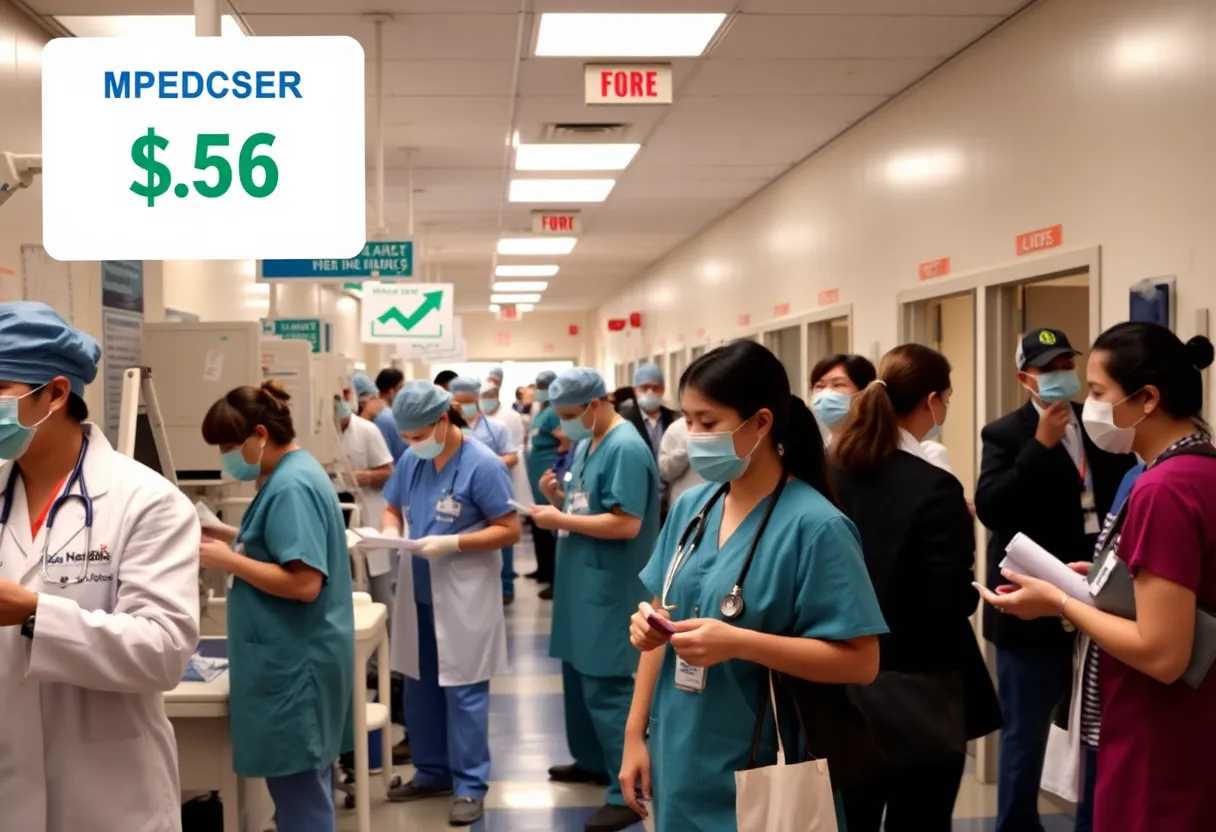News Summary
New York is grappling with a potential $3 billion budget shortfall following federal Medicaid cuts. With millions at risk of losing health coverage, state officials are evaluating the financial implications and considering a special legislative session to address the crisis. Hospitals are expected to absorb significant costs, leading to potential job losses in the healthcare sector as the state navigates these challenging changes.
New York is facing a daunting financial challenge following recent Medicaid cuts enacted by the federal government, which could create a budget gap of at least $3 billion over the next fiscal year. Governor Kathy Hochul and state officials are grappling with the implications of these cuts, anticipated to have substantial effects on health coverage for millions of New Yorkers, particularly those with low incomes and chronic health conditions.
President Donald Trump’s administration approved a spending bill that includes significant federal reductions to Medicaid, effective January. These cuts are projected to create a $750 million budget shortfall in the current fiscal year, escalating to the troubling $3 billion gap for next year. Budget director Blake Washington has emphasized that the state lacks the resources to offset these cuts adequately, indicating that hard choices will need to be made in response to the financial crisis. He has stated that simply raising taxes will not provide a solution.
The first major impact of the federal Medicaid reductions will be on New York’s Essential Plan, which offers health coverage to low-income residents who do not qualify for Medicaid. Approximately 1.5 million New Yorkers are estimated to lose their health coverage as a direct result, including 1.3 million Medicaid recipients and about 730,000 individuals enrolled in the Essential Plan. Currently, 7 million residents are enrolled in Medicaid, a program that serves a large population concentrated in metropolitan areas.
Projected Costs and Impacts
The financial projections indicate that hospitals will bear the brunt of the cuts, with expected direct costs of treating uninsured patients rising to $3 billion annually due to decreased Medicaid funding. Industry experts foresee additional losses in the billions as Medicaid reimbursements decline, severely impacting safety-net hospitals that care for the most vulnerable populations.
Leadership in the healthcare sector has expressed deep concern over the implications of the cuts, with one hospital association president labeling the reductions as “the most destructive healthcare cuts in American history.” Furthermore, alongside the $3 billion losses, New York anticipates an extra $500 million in future expenses linked to new Medicaid work requirements.
Political and Legislative Responses
With the financial outlook still in preliminary stages and pending further evaluation from the Congressional Budget Office, lawmakers in New York are contemplating a special session to address the looming fiscal crisis. The cuts are likely to result in increased reliance on hospitals for acute care, thereby shifting resources away from preventive health services that are crucial for community well-being.
Opposing views exist regarding the justification for the Medicaid cuts. The Trump administration and Republican legislators assert that these reductions are necessary to eliminate waste and combat fraud within the system. In contrast, state officials and critics argue that such measures disproportionately harm vulnerable populations, including children, the elderly, and individuals with disabilities.
The anticipated cuts will also have a ripple effect on employment within healthcare. Projections suggest that around 34,000 jobs in hospitals and related sectors could be eliminated as a result of diminishing funds. The healthcare sector in regions like the Bronx, which relies heavily on Medicaid funding amidst high rates of chronic illness, may experience particularly severe consequences.
Conclusion
The situation remains fluid, and while Hochul’s administration is seeking ways to mitigate some of the adverse effects of the Medicaid reductions, it has become clear that fully compensating for these cuts is beyond the state’s financial capability. As the state moves forward, significant challenges await in ensuring healthcare access for New Yorkers impacted by these sweeping changes.
Deeper Dive: News & Info About This Topic
HERE Resources
Trump Approves Major Medicaid Cuts Raising Concerns
New York Faces $750 Million Budget Shortfall Amid Deficits
New York Faces 63,000 Health Care Job Cuts Due to Federal Legislation
New York Faces Budget Crisis Due to Federal Cuts
Stony Brook Hospital Faces $108 Million Loss Due to Funding Cuts
New York Hospitals Face Major Funding Cuts Under New Legislation
New York City Doula Initiative Supports 1,128 Pregnant Women
New York City Faces Funding Cuts Amid Federal Tax Changes
New York City Faces $8 Billion Health Care Funding Shortfall
New Legislation Set to Cut Medicaid and SNAP Funding in New York
Additional Resources
- City & State NY: Medicaid Cuts Jeopardize Care
- Wikipedia: Medicaid
- Press Connects: House GOP Alleges NY Abused Medicaid Funds
- Google Search: New York Medicaid Cuts
- Gothamist: Medicaid Cuts Will Pummel NY Jobs and Healthcare
- Encyclopedia Britannica: Health Care
- New York Times: Trump Domestic Policy Bill
- Google News: Health Care Cuts New York
- LoHud: NY Medicaid Health Job Losses Due to Cuts

Author: STAFF HERE NEW YORK WRITER
The NEW YORK STAFF WRITER represents the experienced team at HERENewYork.com, your go-to source for actionable local news and information in New York, the five boroughs, and beyond. Specializing in "news you can use," we cover essential topics like product reviews for personal and business needs, local business directories, politics, real estate trends, neighborhood insights, and state news affecting the area—with deep expertise drawn from years of dedicated reporting and strong community input, including local press releases and business updates. We deliver top reporting on high-value events such as New York Fashion Week, Macy's Thanksgiving Day Parade, and Tribeca Film Festival. Our coverage extends to key organizations like the Greater New York Chamber of Commerce and United Way of New York, plus leading businesses in finance and media that power the local economy such as JPMorgan Chase, Goldman Sachs, and Bloomberg. As part of the broader HERE network, including HEREBuffalo.com, we provide comprehensive, credible insights into New York's dynamic landscape.





